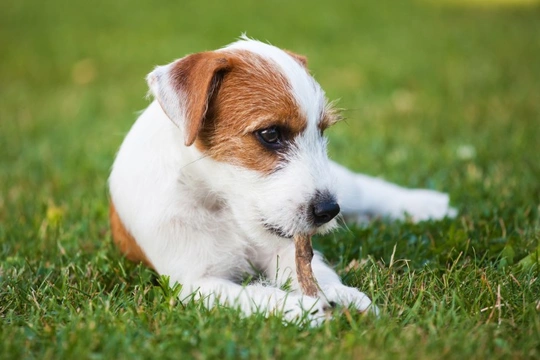
Talking to children about feeding your dog and giving them treats
Dogs and children often make great partners in crime, and in some cases, are never more attuned than where food is concerned-particularly if your child doesn’t want to eat something and your dog is only too happy to help them out! If your child shares their home with a dog, you will probably find that you need to keep an eye on your dog, child and dinner table when all three are together, and also, potentially face the issue of your child either trying to feed your dog unsuitable things, or interfere with your dog’s set meals!
This means that talking to your children about dogs, their food intake and other issues related to feeding them-and also importantly, not feeding them-is an important conversation to have, and one that you may need to have several times with your child as they grow older and their understanding increases! In this article, we will look at some of the important topics that you should talk about with your child when it comes to feeding your dog, and how to explain some of them to young people.
Why dogs eat different foods than you do
Children often wonder why dogs eat food that looks, smells and tastes very different to that which people eat, and they will generally see dog food as dull and unappetising compared to their own meals!
In order to be able to explain to your child why your dog eats what they do and keep your child from feeling bad for your dog’s food options, you will need to talk a little bit about how dogs’ food requirements differ from that of people, and how detailed the conversation is will depend on the age of your child. Explaining that dogs eat a lot of meat and not very much sweet stuff is a good start, and explaining to your child that their meat or kibble contains a wide range of different things such as grain, veg and meat can also help them to understand that your dog is not simply being given dull, plain biscuits every day!
Etiquette when a dog is eating
Teaching your child good etiquette around your dog when they are eating is important from a safety point of view, and is something that you should do from as early an age as possible. Ensure that your children know that when your dog is eating, they do not want to play, and that they will not want to feel rushed, watched or share their food is important, in order to keep your child safe.
Trying to turn it around so that your child can see your dog’s point of view-for instance, they would not be very pleased if they were eating a delicious pudding and someone took their bowl away half way through-can help with this.
Why dogs don’t eat with people
Another important topic to cover is why dogs don’t eat at the table with people, and why they should not be given scraps from the table when you are eating. In order to do this, you will need to explain a little bit to your child about pack mentality and the pecking order within the home, which means that people eat first, and the dog needs to leave them in peace! You can also connect the question with your explanation of why dogs eat different food to people, and that what is on the table will not be suitable for your dog.
Foods that dogs can’t have
Another connected issue is teaching your child the importance of feeding them only appropriate things, and helping them to understand that some foods are bad for dogs, can make them fat, or may even be dangerous. Teaching your child from as young an age as possible that dogs cannot eat chocolate is a good start, and you should also install a blanket rule that your child cannot give your dog a treat or a scrap without checking with your first.
This will both allow you to monitor what your dog eats, and teach your child that correct procedure is never to feed a dog or give them a treat (your dog or anyone else’s) without asking the person in charge.
How and when to give treats
Allowing your child to give you dog treats from time to time is good for both parties, as it will provide opportunities for bonding, and help your dog to view your child in a more positive light. This can be especially helpful if your dog was very wary of your child when they were younger, but now as your child is a little older, better prepared to deal with your dog in the appropriate fashion.
Show your child how to offer the treat to your dog and let them take it, as well as covering what sort of things make for suitable treats-and also, the importance of not over-feeding treats, and teaching your child about how dogs need to moderate their food intake.



